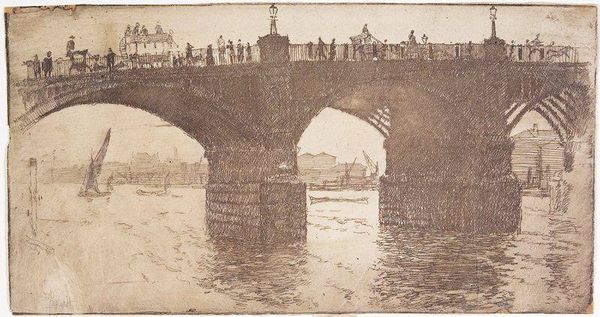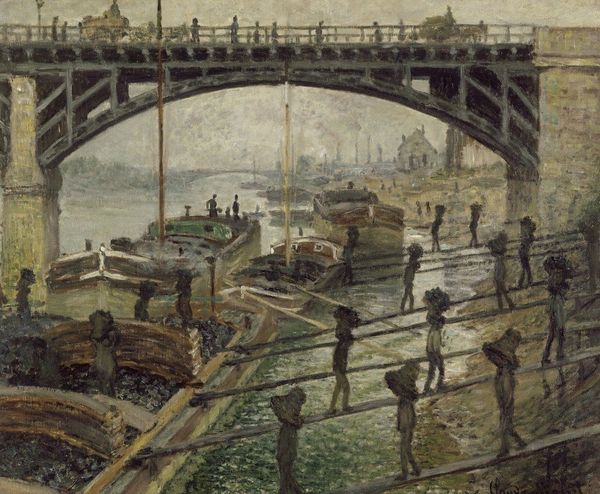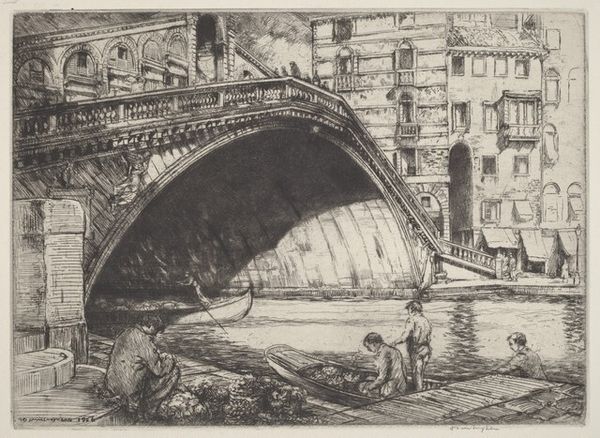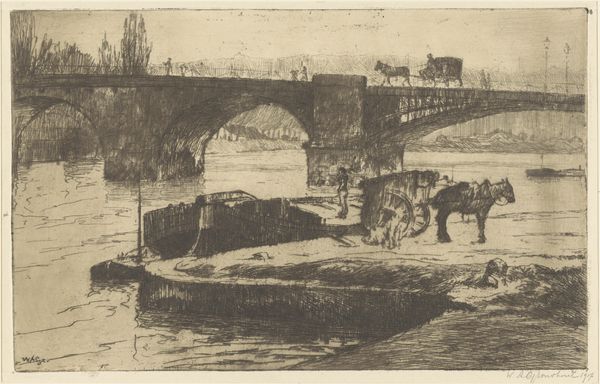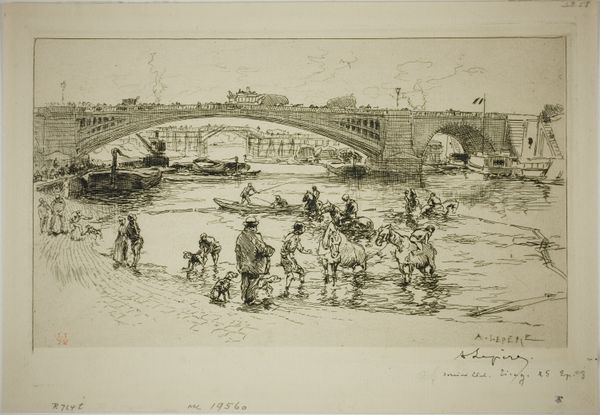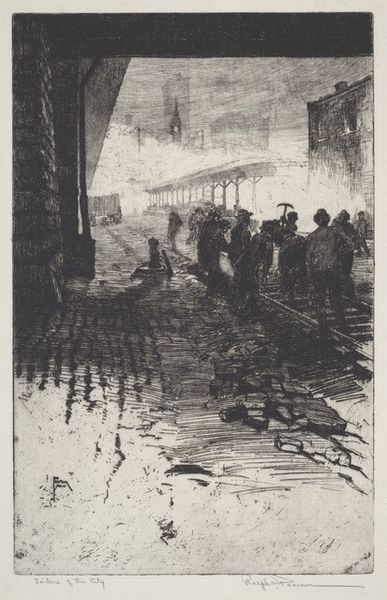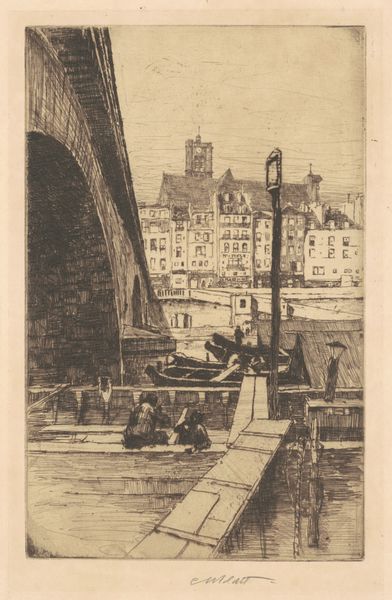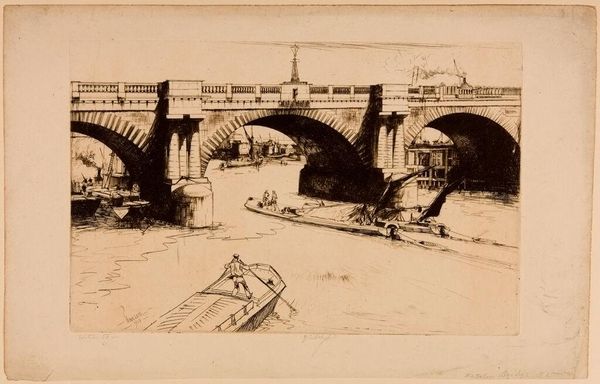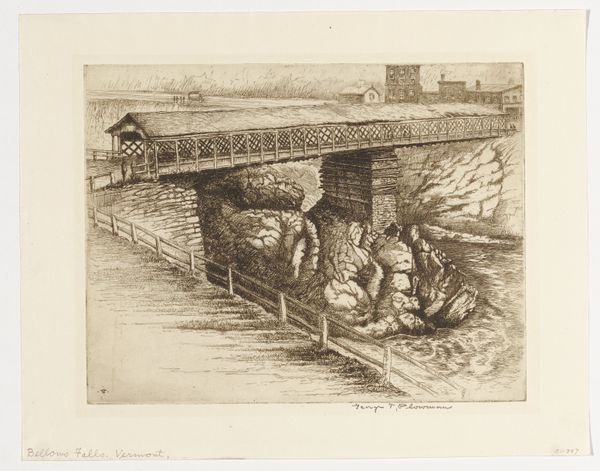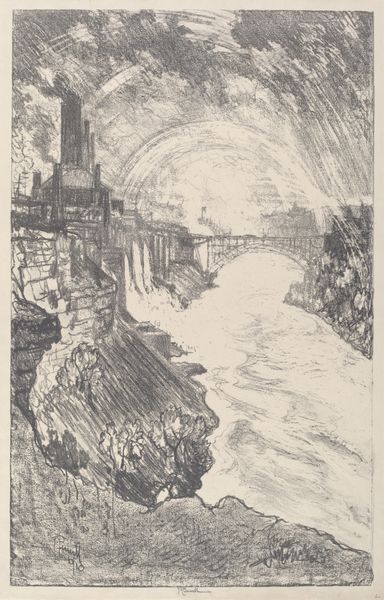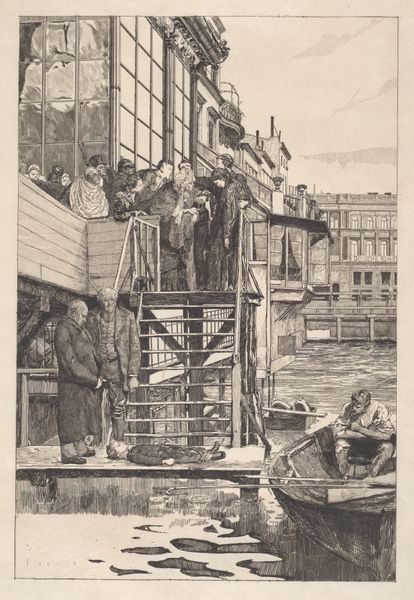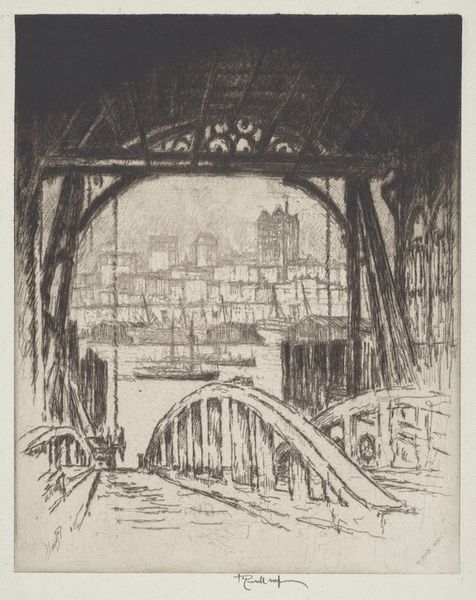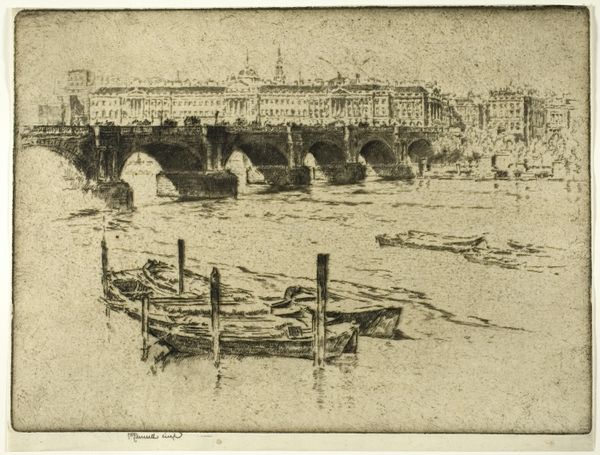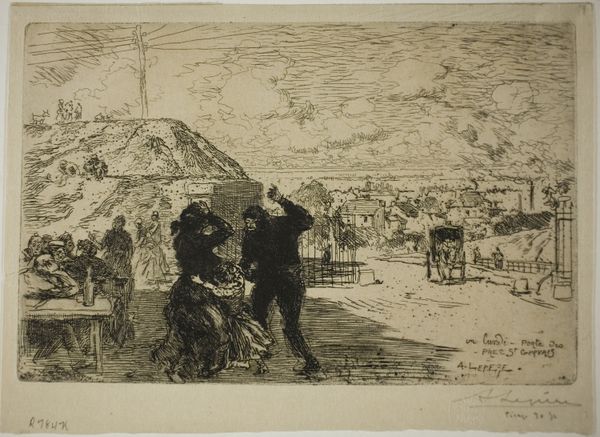
Woodblock for Lock of the Canal Saint-Martin Possibly 1890 - 1910
0:00
0:00
Dimensions: 86 × 102 mm
Copyright: Public Domain
Curator: This is Auguste-Louis Lepère’s “Woodblock for Lock of the Canal Saint-Martin,” likely created between 1890 and 1910. It resides here at the Art Institute of Chicago. Editor: It feels quite stark at first glance. The high contrast really jumps out. There's a strong diagonal created by the pulling figures at the bottom, contrasting with the arch of the bridge above. Curator: The bridge functions as an enduring emblem of connection, a stable element, especially contrasted to the flurry of industrial activity smoking on the skyline. I find it revealing about the social dynamics and progress of the period in France. It's a society visibly transforming and adapting. Editor: It's a very effective piece of engraving! Look at how he uses line to differentiate between textures and distance, suggesting atmospheric perspective through the density of strokes. There is realism here in portraying daily life, but the arrangement is deeply strategic in its visual impact. Curator: I see this industrial development in relation to individuals: from those scaling the architectural marvel to those working in service of the city. The hats could represent aspirations or restrictions; a rigid societal hierarchy in an era of progress. Editor: It certainly emphasizes the class distinctions! You've got the working class right in the foreground pulling some sort of lock system. There are almost theatrical costumes for figures in the background. It shows in its depiction how new engineering endeavors change urban structures, creating entirely new modes of circulation. Curator: The woodblock aesthetic gives the image a particular weight. Each carved line holds so much intent. The textures create a strong representation of a period's identity. It echoes the radical political ideologies fermenting throughout that era. Editor: Indeed, it all blends into a cohesive symbolic narrative! The visual relationships tell an exciting tale and leave one questioning what transformation can lead to, in society, but also visually.
Comments
No comments
Be the first to comment and join the conversation on the ultimate creative platform.
